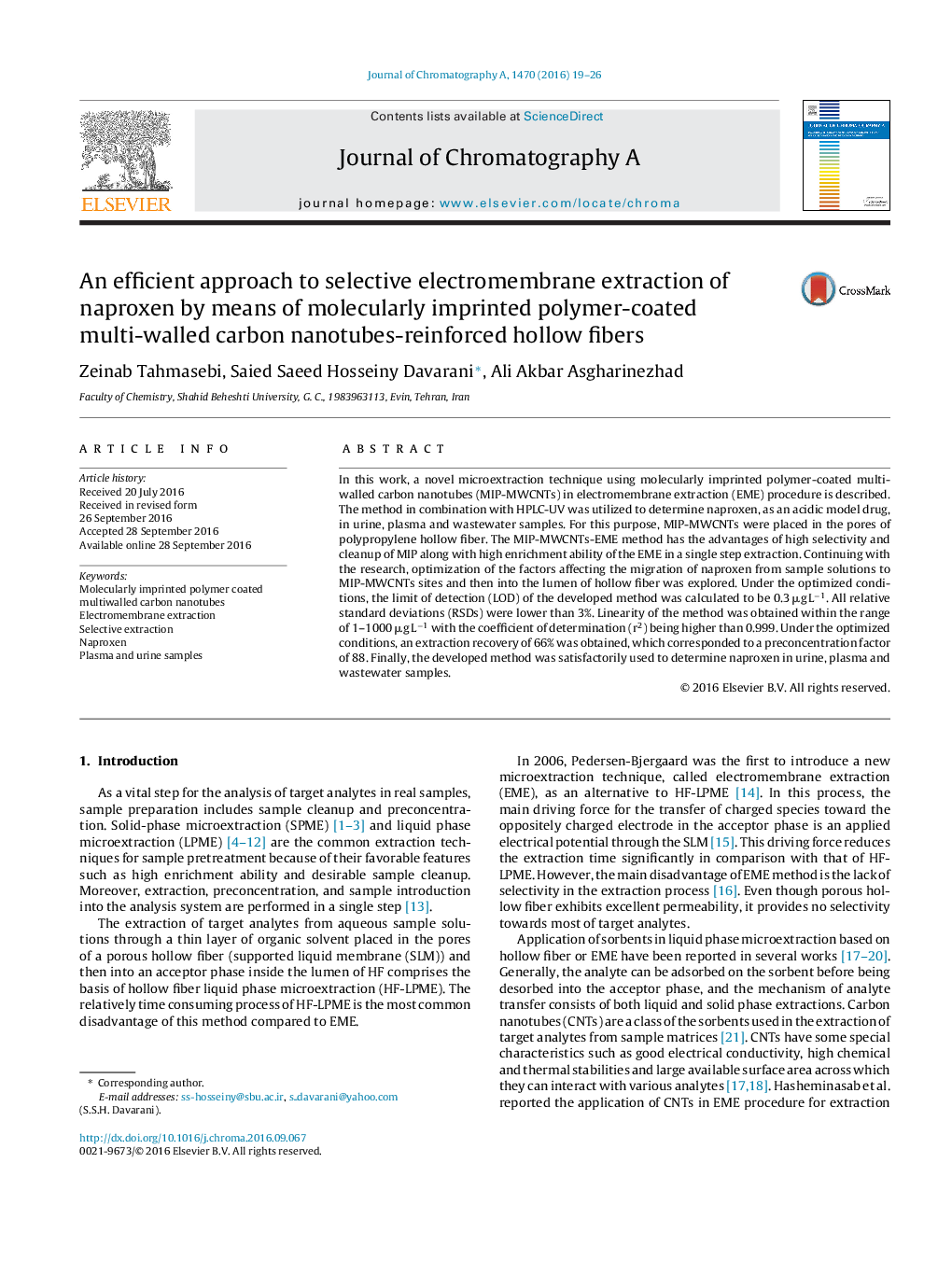| کد مقاله | کد نشریه | سال انتشار | مقاله انگلیسی | نسخه تمام متن |
|---|---|---|---|---|
| 5136031 | 1493456 | 2016 | 8 صفحه PDF | دانلود رایگان |
- A moleculary imprinted polymer was used in electromembrane extraction (EME).
- Sensitivity is mainly increased due to high affinity of MIP with naproxen.
- Selectivity of the method was enhanced owing to the high selectivity of MIP.
- The hollow fiber membrane protects the MIP from an aqueous solution.
In this work, a novel microextraction technique using molecularly imprinted polymer-coated multi-walled carbon nanotubes (MIP-MWCNTs) in electromembrane extraction (EME) procedure is described. The method in combination with HPLC-UV was utilized to determine naproxen, as an acidic model drug, in urine, plasma and wastewater samples. For this purpose, MIP-MWCNTs were placed in the pores of polypropylene hollow fiber. The MIP-MWCNTs-EME method has the advantages of high selectivity and cleanup of MIP along with high enrichment ability of the EME in a single step extraction. Continuing with the research, optimization of the factors affecting the migration of naproxen from sample solutions to MIP-MWCNTs sites and then into the lumen of hollow fiber was explored. Under the optimized conditions, the limit of detection (LOD) of the developed method was calculated to be 0.3 μg Lâ1. All relative standard deviations (RSDs) were lower than 3%. Linearity of the method was obtained within the range of 1-1000 μg Lâ1 with the coefficient of determination (r2) being higher than 0.999. Under the optimized conditions, an extraction recovery of 66% was obtained, which corresponded to a preconcentration factor of 88. Finally, the developed method was satisfactorily used to determine naproxen in urine, plasma and wastewater samples.
Journal: Journal of Chromatography A - Volume 1470, 28 October 2016, Pages 19-26
